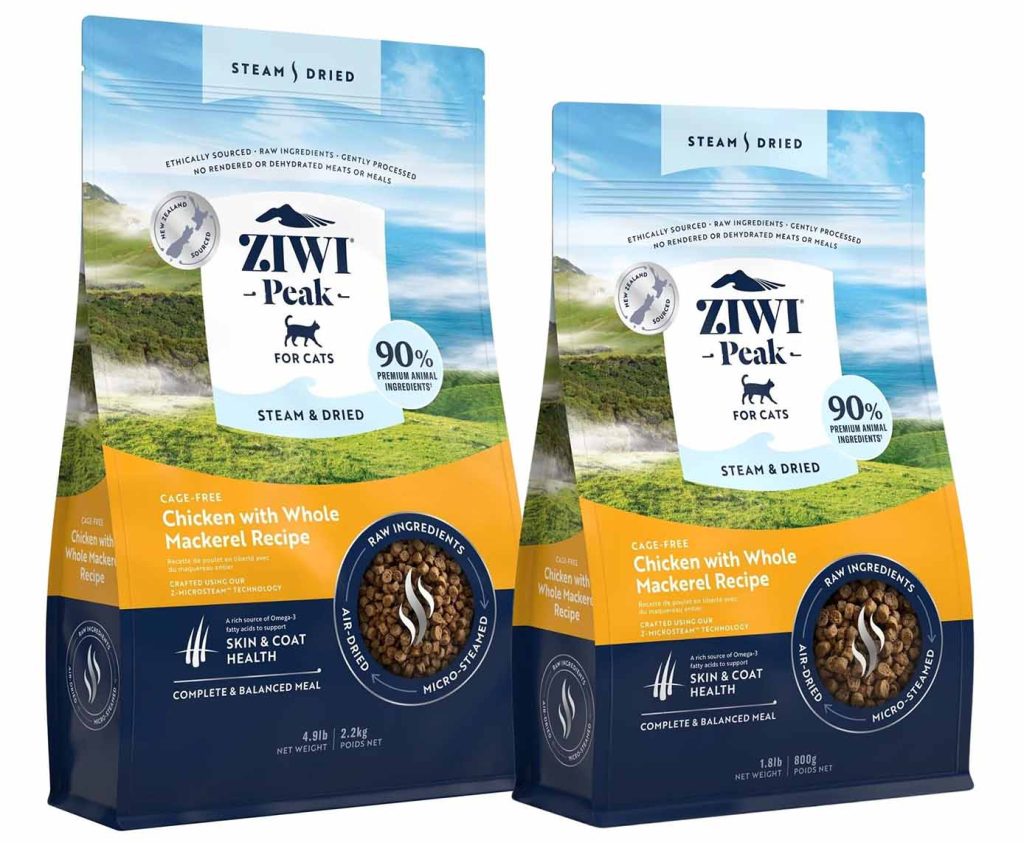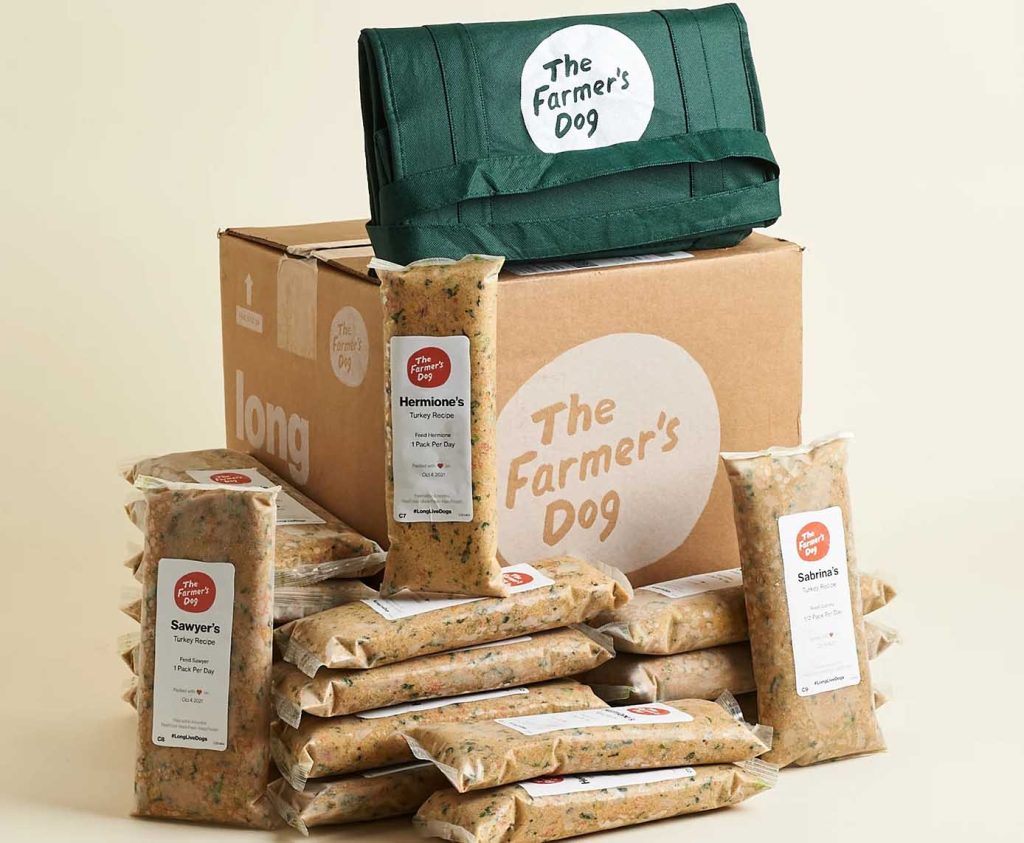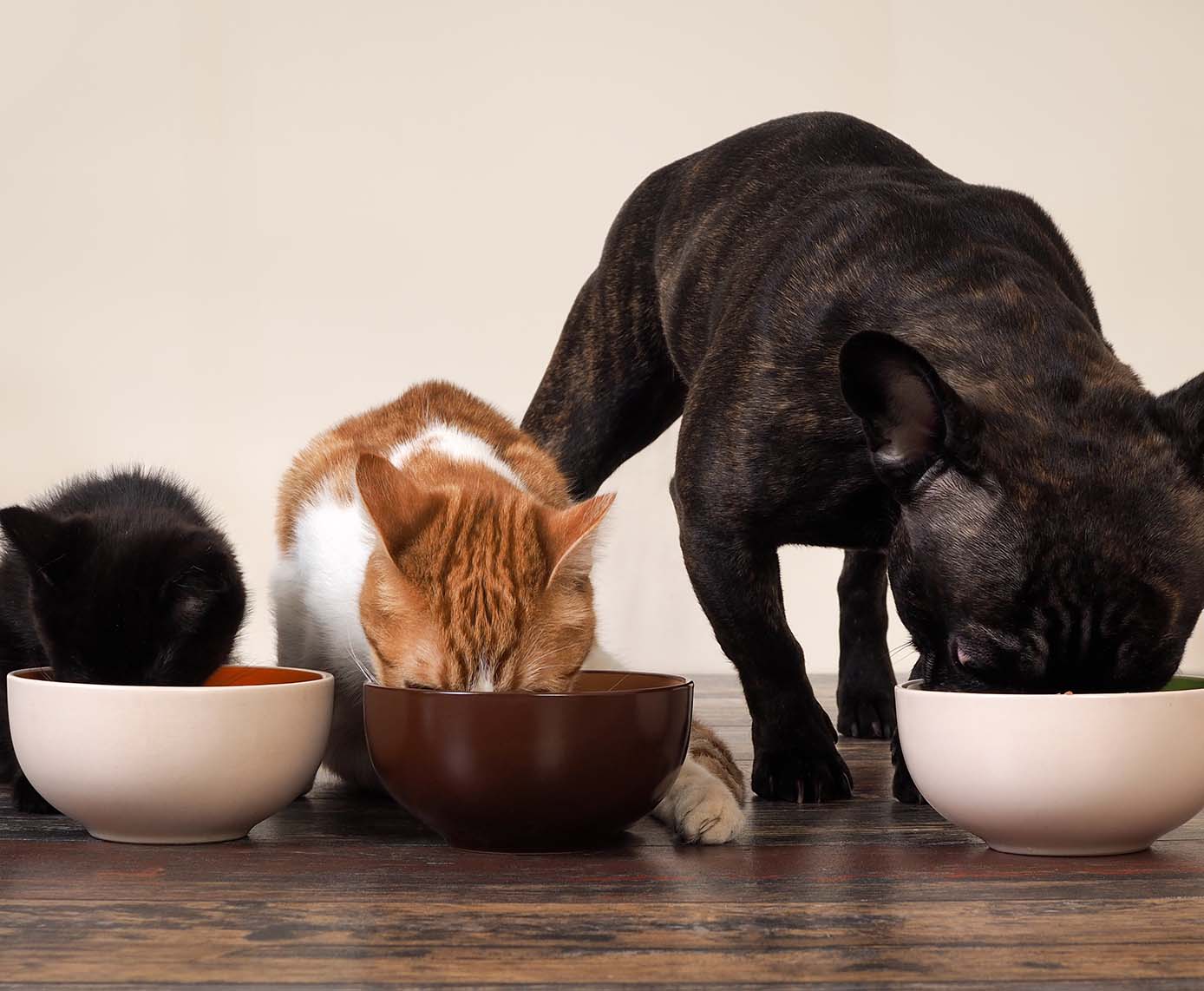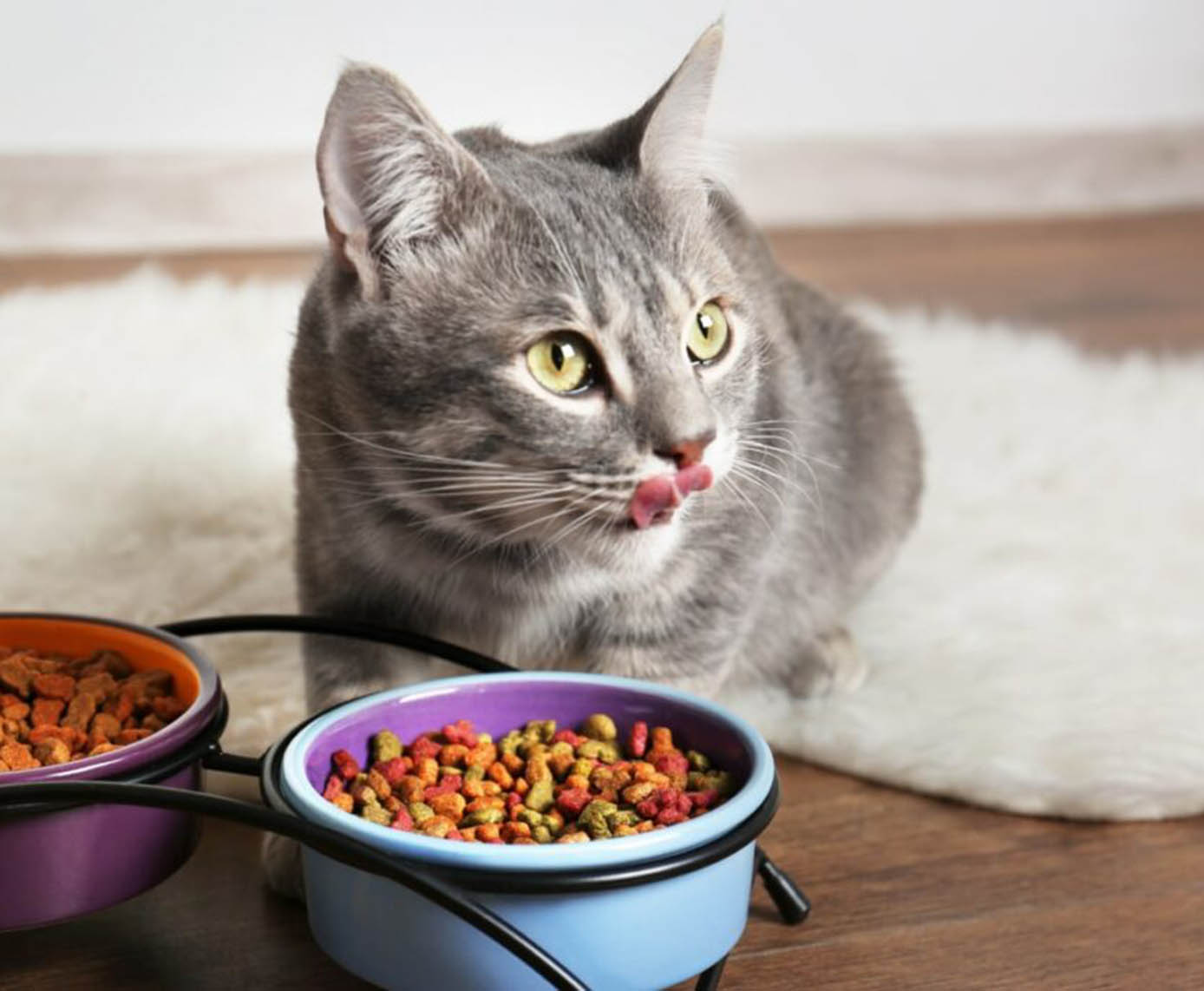In daily life, cats and dogs may seem to get along well, sharing the same living space and playing together, but when it comes to diet, they are worlds apart. For convenience, many people used to choose “universal pet food” to feed multi-pet households. However, the rapid development of pet nutrition science in recent years has shattered the “one-bowl-fits-all” mentality. Divided feeding for cats and dogs is becoming a new trend—not just for appearances but as a genuine nutritional revolution.
With the wide variety of complete dry food and fresh food products on the market, how do we make a scientific and informed choice? The first step is to understand the fundamental biological differences between cats and dogs. Only then can we evaluate food formulations, benefits, and suitability, ultimately feeding scientifically based on individual needs.
1. Understanding the Biological Differences in Nutritional Needs
1.1 Species Differences Determine Nutritional Structure
Cats are obligate carnivores, requiring far more protein and fat than carbohydrates. Dogs, while omnivorous, have retained a high demand for animal protein through evolution but are more tolerant of carbohydrates compared to cats.
Cats cannot synthesize nutrients like taurine, retinol (animal-sourced vitamin A), and arachidonic acid internally. These must be obtained directly from animal-based foods. Dogs, on the other hand, can convert some plant-based nutrients into usable forms, making them more flexible in ingredient sourcing.
1.2 Clear Taste Preference Differences
Cats cannot taste sweetness, making them naturally disinterested in carbohydrate-heavy foods. Dogs, however, are sensitive to sweetness and tend to prefer foods with a richer flavor profile.
This explains why many cats outright refuse high-carb, plant-protein-heavy dog food, while dogs are happy to try various foods. It’s not about being “picky” or “greedy”—it’s a matter of biological instinct.
2. Key Differences Between Complete Dry Food and Fresh Meals
In today’s pet food market, complete dry food and fresh meals are the dominant choices. Each has its strengths and fits different needs.
2.1 Complete Dry Food: Standardized, Nutritionally Balanced, Easy to Store
The term “complete” means the food provides all the nutrients needed to maintain a pet’s health, formulated to standards such as AAFCO (Association of American Feed Control Officials) or FEDIAF (European Pet Food Industry Federation).
Advantages:
- Scientifically balanced, often designed by veterinary nutritionists
- Long shelf life, easy to store
- Cost-effective per gram; suitable for long-term feeding
- Convenient for busy households—no daily prep required
Disadvantages:
- Processing may destroy some natural nutrients
- Flavor and palatability may not match fresh food
- High-heat extrusion can denature proteins, reducing digestibility
- May not be suitable for picky eaters or pets with sensitive digestion

2.2 Fresh Meals: Natural Diet Structure with Enhanced Palatability
Fresh meals emphasize using real, whole ingredients. They’re often gently cooked, slow-roasted, or freeze-dried to retain nutrients and flavor. Common ingredients include chicken, beef, turkey, salmon, along with carrots, pumpkin, blueberries, and other wholesome add-ins.
Advantages:
- Excellent palatability, rich aroma stimulates appetite
- Nutrients are preserved more completely
- Can improve coat condition and reduce digestive issues
- Trend toward customization based on age, weight, and sensitivities
Disadvantages:
- Require refrigeration or freezing
- Shorter shelf life—not ideal for bulk storage
- Higher cost and daily prep time needed
- Quality control varies—some small brands lack oversight
3. Divided Feeding for Cats and Dogs Is More Than “Switching Foods”
3.1 Nutritional Incompatibility
For example, most dog food lacks enough taurine to meet a cat’s needs. If cats are fed dog food long-term, they may develop vision problems or cardiomyopathy. Meanwhile, dogs eating high-protein, low-carb cat food may face obesity, digestive stress, or calcium-phosphorus imbalances over time.
3.2 Feeding Behavior Requires Different Methods
Cats prefer small, frequent meals and free feeding, making them more suited to automatic feeders with dry food or freeze-dried raw. Dogs typically eat twice a day and follow a routine, so they’re better off with wet food, canned food, or thawed fresh meals served at scheduled times.
4. Product Recommendations for Different Needs (Available on amazon.com)
Here are a few reputable, newer products suited to various pet dietary needs. All are available on amazon.com.
For Cats: ZIWI Peak Air-Dried Cat Food (New Zealand)
- Type: Air-dried fresh food
- Main ingredients: Venison, green-lipped mussel, beef liver
- Features: Over 95% animal protein—ideal for high-protein feline diets
- Benefits: High nutrient density, free of grains, legumes, or high-GI carbs
- Best for: Weight control, coat health, sensitive or allergy-prone cats
- Find it by searching: “ZIWI Peak Air-Dried Cat Food” on amazon.com
For Dogs: The Farmer’s Dog Fresh Food Plan (Customizable Frozen Meals)
- Type: Frozen fresh food (chicken/beef/turkey options)
- Main ingredients: Human-grade meat, fruits, vegetables, Omega-3s
- Features: Customized per weight, age, and health conditions
- Benefits: No by-products or artificial additives, cold-chain delivery
- Best for: Picky eaters, dogs with obesity or sensitivities, post-op recovery
- How to buy: Subscription via official site (some products available on amazon.com)
5. How to Tell Which Type Suits Your Pet
There’s no “one-size-fits-all” solution. The right choice depends on individual needs. Here are some factors to consider:
5.1 Age and Health Status
- Kittens/Puppies: Choose high-energy, easily digestible fresh food or specially formulated complete food
- Adults: Base food choice on activity level, body condition, and preferences
- Seniors: Sensitive stomachs or dental issues? Wet food or soft fresh food is ideal
- Chronic conditions (e.g., kidney or pancreatic disease): Seek veterinary-recommended prescription diets or low-protein fresh meals
5.2 Observing Feeding Behavior
- Likes to chew: Dry food or freeze-dried is better
- Picky: Try fresh food for improved palatability
- Digestive sensitivity: Avoid high-starch foods; choose easy-to-digest meat and low-fiber veggies
- Irregular stools or strong odor: Might be due to high fiber or additives; opt for natural, whole-food-based diets

6. Proper Transitioning to New Food or Fresh Additions
Avoid abrupt changes—cats and dogs have sensitive digestive systems. Follow these guidelines:
- Switching dry food (A to B): Mix new and old gradually over 5–7 days
- Dry food to fresh: Start with small amounts of fresh food as a topper, then gradually increase
- Adding freeze-dried raw: Soak first to soften, mix with existing food, then serve separately
- Temperature matters: Bring fresh food to room temperature before serving
- Monitor stool changes: If diarrhea or vomiting occurs, pause and consult a vet
7. The Future of Divided Feeding
Today, divided feeding represents not only a response to different nutritional needs but also a sign of deeper respect for our pets. It’s not about luxury—it’s a natural evolution of more precise pet care.
Trends to watch:
- Personalized fresh food will grow: AI-powered formulations and DNA-based nutrition plans are emerging
- Functional diets are on the rise: Foods targeting urinary health, coat condition, or joints are gaining popularity
- Pet mealtime culture is evolving: From bowls to rituals, food is becoming a deeper emotional connection
- Allergy management is improving: Low-allergen and elimination diets are becoming standard practices
Feeding Smarter is the First Step Toward a Healthier Pet
Every cat and dog is a unique individual. Their constitution, preferences, habits, and routines vary. No “universal recipe” can meet all their needs. True care isn’t just about feeding them—it’s about understanding them, supporting their physiology, and choosing what suits them best.



